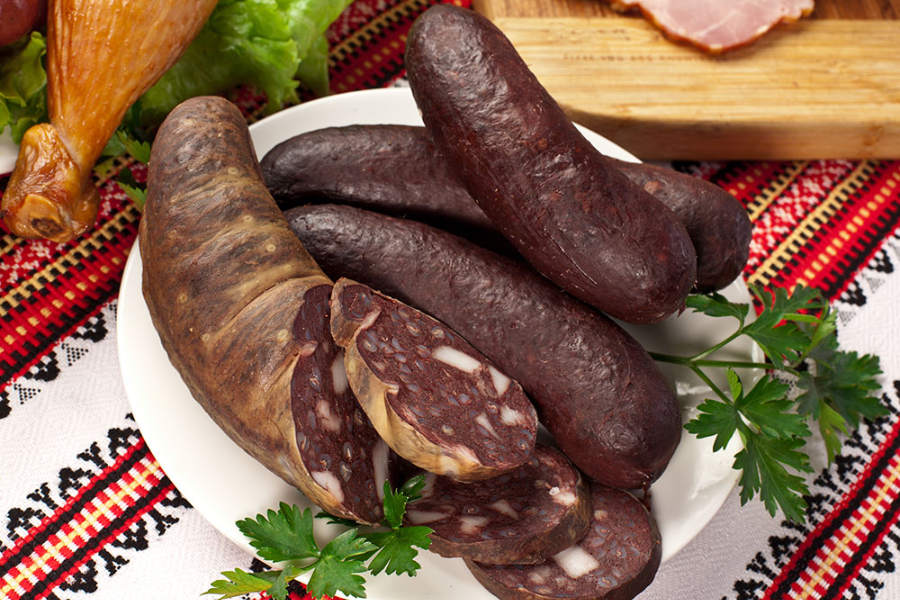Exploring Moronga: The Traditional Blood Sausage with a Rich History
What Is Moronga?
Moronga is a traditional blood sausage deeply rooted in culinary practices around the world. Its origins are linked to the age-old custom of utilizing every part of an animal post-slaughter, a practice that many cultures embrace for its sustainability. The term “moronga” is derived from the Spanish “morcilla,” which also refers to blood sausages commonly found in Spain.
Essential Ingredients in Moronga
While recipes for moronga may vary by region, the essential components typically include:
- Pig’s Blood: The cornerstone ingredient, lending moronga its rich, iron-filled flavor and distinctive dark hue.
- Fat: Pork fat is added to enhance texture and moisture in the sausage.
- Herbs and Spices: Common flavor enhancers include garlic, oregano, onions, and various peppers.
- Cereals: Some recipes incorporate rice, oats, or cornmeal as fillers.
These ingredients are blended together, stuffed into casings, and boiled until they achieve a firm yet tender consistency.
A Brief History of Moronga
The tradition of crafting blood sausage has ancient origins, with moronga evolving from a necessity in agricultural societies where using every part of a pig was essential to minimize waste. Across Europe, Africa, and the Americas, blood sausages have been prepared for centuries in various forms.
In Latin America, moronga has become a cherished dish in countries such as Mexico and El Salvador, often featured during family gatherings and celebrations. Over time, it has transitioned from a humble working-class meal to a beloved delicacy found in both restaurants and street food stalls.
The Process of Making Moronga
Crafting moronga is a meticulous process that demands attention to detail and patience. The procedure typically involves the following steps:
- Collecting Pig’s Blood: Fresh pig’s blood is the primary ingredient, and it must be carefully collected and stirred to prevent coagulation.
- Preparing the Mixture: The blood is mixed with herbs, spices, cooked rice, and finely chopped vegetables, such as onions and garlic. Depending on regional preferences, other ingredients like cornmeal or oats may also be added.
- Stuffing the Casings: The mixture is then stuffed into natural or synthetic casings, akin to traditional sausage-making. The casings are often soaked beforehand to facilitate handling.
- Boiling the Sausage: Once filled, the moronga sausages are boiled for an hour or more until they firm up.
- Cooling and Storing: After boiling, the sausages cool down and can be enjoyed immediately or stored for later consumption.
Nutritional Benefits of Moronga
Moronga is not only flavorful but also a nutrient-dense option for those seeking high-protein foods. Its rich pig’s blood content makes it an excellent source of iron, essential for preventing anemia. Additionally, the fat content provides energy, while the herbs and spices contribute beneficial antioxidants.
Nutritional Highlights:
- Iron-Rich: Moronga is a significant dietary source of iron due to its blood content.
- High in Protein: It offers substantial protein, vital for muscle growth and repair.
- Source of Essential Vitamins: Moronga includes vitamins such as B12, which are crucial for nerve function and red blood cell production.
However, due to its fat content, it is advisable for those monitoring cholesterol levels to enjoy moronga in moderation.
Popular Ways to Enjoy Moronga
Moronga can be prepared and enjoyed in various ways, depending on regional customs and individual tastes. Here are some popular serving methods:
- Tacos de Moronga: A favorite way to enjoy moronga, where the sausage is sliced, lightly fried, and served in soft tortillas topped with cilantro, onions, and salsa—common in Mexican street food.
- Grilled Moronga: Grilling imparts a smoky flavor, enhancing the sausage’s natural taste. It is often served with fresh lime, chili, and tortillas.
- Moronga Soup: In certain regions, moronga is added to soups and stews, enriching the broth with a deep, savory flavor, often accompanied by vegetables and beans.
- Moronga with Rice and Beans: This staple combination in Latin America offers a well-rounded meal of protein, fiber, and carbohydrates.
The Growing Popularity of Moronga
Despite its long-standing history, moronga is experiencing a revival for various reasons:
- Culinary Exploration: As more individuals explore traditional cuisines, moronga garners attention for its distinctive flavors.
- Sustainable Practices: The philosophy of utilizing the entire animal aligns with the values of those committed to sustainable eating habits.
- Nutritional Appeal: With its high iron and protein content, moronga attracts health-conscious individuals seeking wholesome, natural foods.
Summary
Moronga is a traditional blood sausage with deep cultural roots in Latin American and Spanish cuisines. Made primarily from pig’s blood, fat, herbs, spices, and sometimes cereals like rice or oats, it embodies the practice of using all parts of the animal, minimizing waste. Over time, moronga has evolved from a humble meal into a popular delicacy served in street food stalls and restaurants. It can be prepared in various ways, such as in tacos, grilled, or added to soups. Moronga is also nutritionally rich, offering high protein and iron content, although it should be consumed in moderation due to its fat content. As global interest in sustainable eating grows, so does moronga’s popularity.
FAQs:
1. What is moronga?
Moronga is a type of blood sausage made primarily from pig’s blood, pork fat, herbs, and spices. It’s a traditional dish in many Latin American countries and Spain.
2. What are the main ingredients in moronga?
The core ingredients of moronga include pig’s blood, pork fat, garlic, onions, oregano, and sometimes cereals like rice, cornmeal, or oats.
3. How is moronga prepared?
The blood and other ingredients are mixed and stuffed into casings, which are then boiled until the sausage solidifies into a firm texture.
4. Where is moronga popular?
Moronga is popular in countries like Mexico and El Salvador, where it is commonly served in tacos, grilled, or added to soups and stews.
5. Is moronga healthy?
Moronga is rich in iron and protein, making it a nutrient-dense food. However, its high fat content means it should be consumed in moderation, especially by those watching their cholesterol levels.
6. How is moronga typically served?
Moronga can be enjoyed in various ways, such as in tacos, grilled, served with rice and beans, or as part of soups and stews.
7. Why is moronga gaining popularity?
Moronga is gaining popularity due to increasing interest in traditional, nutrient-dense foods and sustainable eating practices that minimize waste by using the entire animal.
Stay in touch to get more news & updates on Realblog!






